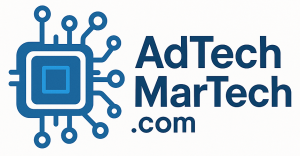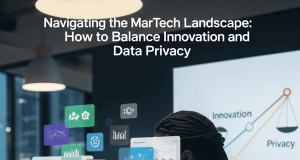As data privacy regulations tighten globally, the importance of effective consent management has never been more pronounced. Organizations must grapple with navigating a complex landscape of laws, such as the General Data Protection Regulation (GDPR) in Europe and the California Consumer Privacy Act (CCPA) in the United States, while keeping user trust at the forefront. In 2025, the future of consent management platforms (CMPs) is being shaped by several key innovations aimed at streamlining compliance, enhancing user experience, and improving data protection. Here’s an overview of the most significant trends and innovations in this space.
1. Enhanced User Interfaces and Experience
The concept of “consent fatigue” has become a growing concern as users are inundated with consent requests daily. In response, 2025 has seen CMPs incorporating more user-friendly designs and intuitive interfaces. These innovations prioritize clarity, allowing users to easily understand what they are consenting to and why it matters.
- Dynamic Consent Options: Instead of traditional static consent forms, CMPs now provide dynamic options that allow users to change their preferences in real-time. This adaptability fosters engagement and empowers users to take control of their data.
- Dynamic Consent Options: Instead of traditional static consent forms, CMPs now provide dynamic options that allow users to change their preferences in real-time. This adaptability fosters engagement and empowers users to take control of their data.
- Customizable Consent Banners: Organizations can now tailor consent banners to fit their brand identity, creating a seamless experience that integrates smoothly into their websites and applications.
2. AI and Machine Learning Integration
Artificial intelligence is playing a significant role in shaping CMPs in 2025. By leveraging machine learning algorithms, these platforms can analyze user behavior and adjust consent requests accordingly.
- Predictive Analytics: CMPs can predict which consent types are more likely to be accepted based on previous interactions. This capability enables organizations to present more relevant options to users, reducing the likelihood of rejection.
- Predictive Analytics: CMPs can predict which consent types are more likely to be accepted based on previous interactions. This capability enables organizations to present more relevant options to users, reducing the likelihood of rejection.
- Automated Compliance: AI can help automate the monitoring of regulations and standards relevant to consent management, alerting companies to potential compliance breaches proactively.
3. Privacy-First Design Principles
As privacy becomes a top priority for both users and regulators, CMPs in 2025 are increasingly adopting privacy-first design principles. This approach ensures that consent management is not just about compliance but also about respecting users’ rights.
- Data Minimization: Platforms are emphasizing the need for collecting only the data necessary for specified purposes. This minimization reduces potential risks associated with data breaches.
- Data Minimization: Platforms are emphasizing the need for collecting only the data necessary for specified purposes. This minimization reduces potential risks associated with data breaches.
- Transparent Data Usage Policies: Companies are encouraged to clearly articulate how user data will be used, fostering transparency and building trust. Enhanced trust can lead to higher consent rates and stronger customer loyalty.
4. Blockchain Technology
The emergent use of blockchain technology in consent management represents a groundbreaking shift. In 2025, several companies are exploring decentralized consent management systems that offer increased security and user control.
- Immutable Consent Records: Blockchain can create unalterable records of user consent, ensuring accountability and providing a verifiable trail that can be audited. This transparency can be particularly important for organizations subject to rigorous compliance checks.
- Immutable Consent Records: Blockchain can create unalterable records of user consent, ensuring accountability and providing a verifiable trail that can be audited. This transparency can be particularly important for organizations subject to rigorous compliance checks.
- Smart Contracts: Utilizing smart contracts allows for the automatic execution of consent agreements when predetermined conditions are met. This automation minimizes manual errors and ensures compliance in real-time.
5. Cross-platform Integration
In an era where users interact with multiple devices and platforms, the ability for CMPs to integrate across these ecosystems is crucial. In 2025, innovations aim to ensure a seamless user experience irrespective of the platform being used.
- Unified Consent Across Channels: Users can manage their consent preferences across various platforms—desktop, mobile, and third-party applications—through a unified interface. This consistency reinforces user control and enhances trust.
- Unified Consent Across Channels: Users can manage their consent preferences across various platforms—desktop, mobile, and third-party applications—through a unified interface. This consistency reinforces user control and enhances trust.
- Interoperability Standards: As different regulations emerge globally, platforms are working towards establishing interoperability standards, allowing for smoother compliance across jurisdictions.
6. Focus on Educational Initiatives
As awareness of data privacy issues rises, CMPs are stepping up efforts to educate users about their rights and the implications of data sharing.
- Interactive Learning Modules: Many platforms are integrating educational resources that inform users about data privacy. These modules can include quizzes, infographics, and tutorials that demystify complex legal jargon and empower users to make informed decisions.
- Interactive Learning Modules: Many platforms are integrating educational resources that inform users about data privacy. These modules can include quizzes, infographics, and tutorials that demystify complex legal jargon and empower users to make informed decisions.
- Gamification: Some CMPs are adopting a gamified approach to encourage engagement. By turning consent management into an interactive experience, users are more likely to pay attention to their choices.
Conclusion
The landscape of consent management is rapidly evolving, driven by technological advancements and an increased emphasis on user rights. In 2025, the innovations within CMPs are not just about compliance; they represent a fundamental shift towards prioritizing user experience and data privacy. As companies adapt to these changes, a more transparent, user-friendly, and secure approach to consent management is emerging, ultimately fostering a stronger relationship between organizations and their users. Embracing these trends will be crucial for businesses aiming to thrive in an increasingly privacy-centric world.









